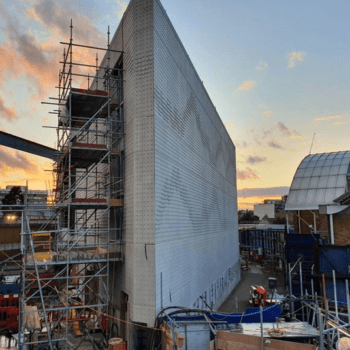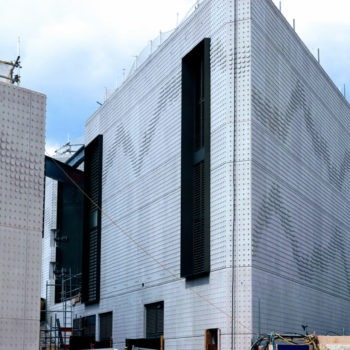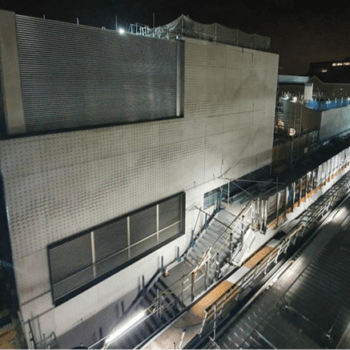Part of the huge Crossrail development, Whitechapel Station is being modernised and extended in a project that combines the apparently conflicting requirements of retaining the old façade of the station whilst giving passengers a modern, light and environmentally sustainable access to the Crossrail lines.
Much of the new building has been constructed using bricks from demolished structures. These areas blend attractively with the older part of a historic station, so there is no visual conflict between ancient and modern. However, today’s railways need more than tradition, and a thousand tonnes of structural steel were installed above the London Overground and Hammersmith & City and District lines to support the new concourse, which links the new ticket hall to the shaft down which passengers will travel to reach the Elizabeth line platforms.
The work on the station is being carried out by BBMV, a Joint Venture between Balfour Beatty, Morgan Sindall and VINCI Construction. The architects and designers have worked to bring about a lovely building that combines the practicalities of its purpose with a link to the history of the area, as well as the streamlined and smooth curves that are so much a part of modern architecture.
It was with this in mind that BBMV commissioned Evans Concrete Products Ltd., part of the Shay Murtagh Group, to manufacture, deliver and install over five hundred bespoke façade panels which are patterned with the sound waves created by such famous foundry bells as Big Ben and Liberty Bell. The Whitechapel Foundry is the oldest factory in the world, and probably the most famous for casting bronze bells.
Evans Concrete used over 3,200 square metres of precast concrete for the Façade Panels, and is justifiably proud of the contribution it has made to an iconic building. Clearly and attractively modern, the design of the panels offers a salute to the old whilst standing as part of twenty-first century transport infrastructure in the best traditions of London design and technology.




